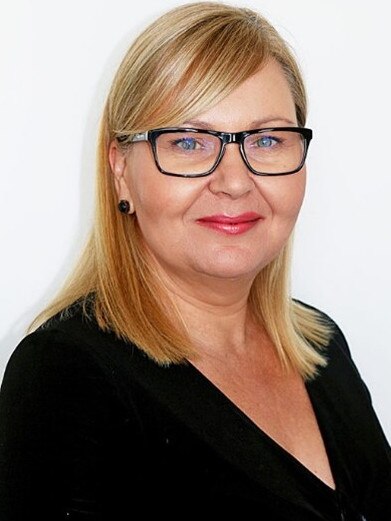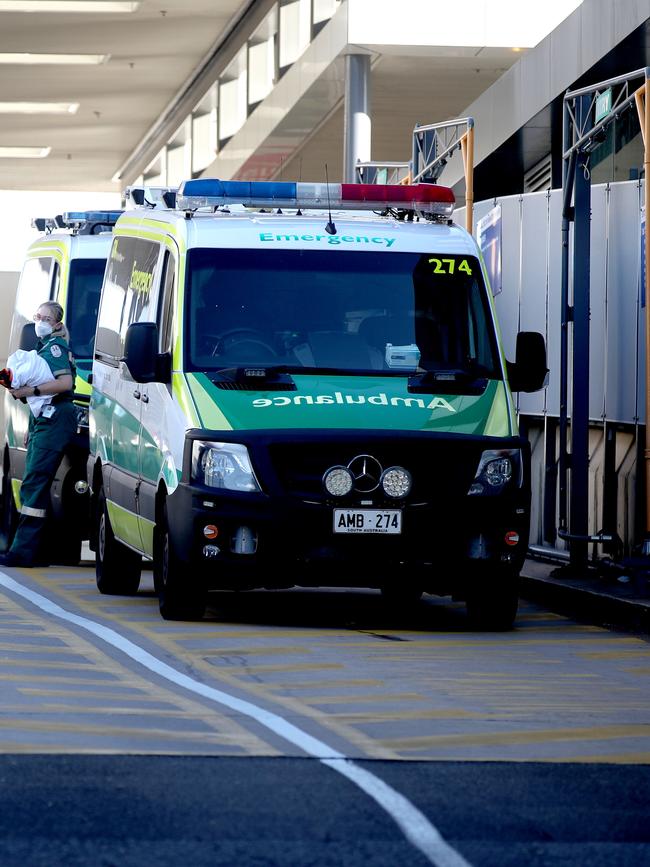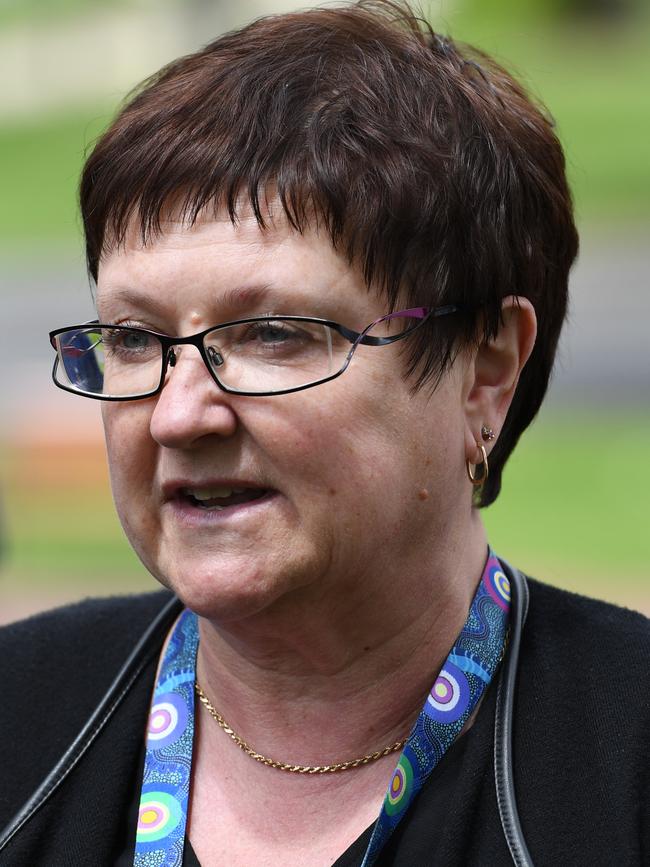Flinders Medical Centre turns storerooms into beds in bid to ease ramping crush
One Adelaide hospital has been forced to convert storerooms and other “unconventional spaces” into patient beds in a bid to ease the ramping crush and overflowing waiting rooms.
SA News
Don't miss out on the headlines from SA News. Followed categories will be added to My News.
Storerooms are being converted to Emergency Department treatment spaces as Flinders Medical Centre desperately tries to find extra beds when it becomes overwhelmed by ramped ambulances and packed waiting room.
Southern Adelaide Local Health Network chief executive Dr Kerrie Freeman told a parliamentary committee hearing “unconventional” spaces were being used to deal with surges in demand.
“We have converted eight spaces which would have been called unconventional spaces into beds,” she said.
“They were largely either storerooms or treatment spaces. It’s within existing clinical wards.”
Dr Freeman stressed SALHN ensures such spaces are fully staffed and safe for patients.
“We are using every single bed we can … if it is a bed and it is safe we will put a patient in it,” she said.


She noted it is “not a good patient experience” to be put in a bed in a space not designed for an overnight stay such as rooms with “equipment and people coming in and out.”
However, she told the committee when a surge in patients is on, “we will push into any space we can” to get patients out of ramped ambulances and the waiting room.
“I don’t call them unconventional spaces, they are just beds,” she said. “They are all staffed beds.
“We will do what we have to do to keep people safe.”
Dr Freeman also told the committee the move to cut the ED by 12 beds was justified and was a recommendation of a report which found the beds were being used by patients who were effectively inpatients and it would be better to use the beds as a short stay ward – which is what has been implemented.
The hearing was also told a federal plan will see a new urgent care centre built in the FMC precinct to treat less urgent arrivals seeking emergency care, but this is still in the planning stages.
Even as Dr Freeman was giving evidence on Tuesday morning, the SA Ambulance Service declared an OPSTAT White emergency “due to ramping and uncovered emergencies.”
Commenting on the committee hearing, Opposition health spokeswoman Ashton Hurn noted ramping has soared to record levels since the election.
“It’s quite shocking to think a loved could go to hospital for a bed but end up in a storage space — but it seems frontline workers have no other choice while they wait for Peter Malinauskas to deliver on his promise to fix ramping,” Ms Hurn said.
Women’s and Children’s Local Health Network chief executive Lindsey Gough also appeared before the committee and said a major assessment of work needed to sustain the WCH until a new one was built was now under way, with a report expected early in the new year.
With the new $3.2bn hospital not due to open until 2031 – provided it is on schedule – maintaining the existing hospital is likely to soar into the hundreds of millions of dollars, with more than $80m spent so far since 2018.
“Ensuring the current WCH is able to continue to provide high quality care for children and families is a priority – the work required will be a prioritised,” Ms Gough said. “
She told the committee ramping was “not a significant problem” at the WCH but it took maternity, neonatal and paediatric patients from FMC and Lyell McEwin Hospital when those sites experienced ramping, to spread the load.

Ms Gough also revealed the virtual urgent care service established on August 30, 2021 had treated almost 16,000 patients using telehealth and 90 per cent had not needed to go to emergency departments, including at other city and regional hospitals.
Central Adelaide Local Health Network chief executive Professor Lesley Dwyer also gave evidence — as ambulances ramped at the Royal Adelaide Hospital — about almost a dozen projects to try to reduce ramping.
She noted length of stay at the RAH had risen by more than a day in the past year, and that a place referred to as “the cabin” is used to relieve pressure on the Queen Elizabeth Hospital emergency department.
Asked if the RAH also uses “unconventional spaces such as storerooms” for patients she replied: ”An unconventional space is a bed, it may not be a single room, it may be a recovery area.”
Prof Dwyer also noted ward patients due for discharge may be asked to sit on a chair so their bed can be used by patients to free up the ED.
She defended her plan to relieve ramping by having consultants finish rounds by 10.30am instead of late afternoon to fast track discharges saying it was safe and evidence-based, and would free up the equivalent of a 30-bed ward.
Prof Dwyer also said there are “four ramps” — ambulances with patients stuck in hospital carparks, patients waiting long times for an ambulance, the elective surgery queue, and patients waiting for discharge.
More Coverage
Read related topics:SA Health





